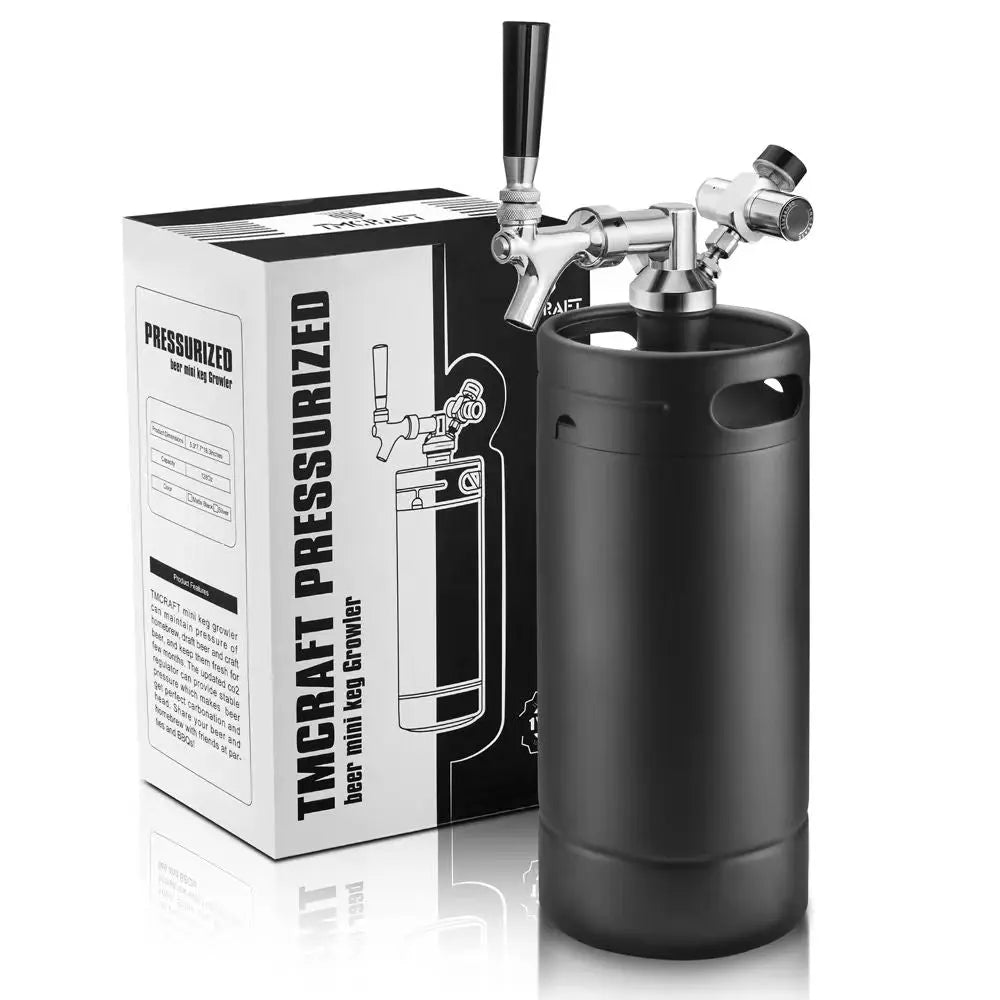-
TMCRAFT 1.6 Gallon Cleaning Ball Lock Keg
Regular price $136.99 USDRegular priceUnit price / per -
TMCRAFT 2.5 Gallon Ball Lock Keg
Regular price $119.99 USDRegular priceUnit price / per -
TMCRAFT 3 Gallon Ball Lock Keg
Regular price $129.99 USDRegular priceUnit price / per -
TMCRAFT 3 Gallon Ball Lock Keg
Regular price $119.99 USDRegular priceUnit price / per -
TMCRAFT 5 Gallon Ball Lock Keg
Regular price $135.99 USDRegular priceUnit price / per -
TMCRAFT 5 Gallon Ball Lock Keg *2
Regular price $249.99 USDRegular priceUnit price / per -
TMCRAFT 5 Gallon Ball Lock Keg with Single Handle
Regular price $129.99 USDRegular priceUnit price / per -
TMCRAFT 6.5 Gallon Ball Lock Keg
Regular price $159.99 USDRegular priceUnit price / per
Collection: Commercial Ball Lock Keg
Commercial ball lock kegs, also known as Sankey kegs, are commonly used in the beer industry for storing and dispensing beer in bars, restaurants, and breweries. Unlike homebrewing corny kegs, commercial ball lock kegs are typically larger and have a different design. Here's how commercial ball lock kegs work:
Components of a Commercial Ball Lock Keg:
-
Keg Body: The main body of the commercial keg is typically made of stainless steel and can vary in size, with common sizes being 1/2 barrel (15.5 gallons), 1/4 barrel (7.75 gallons), and 1/6 barrel (5.16 gallons). These kegs are much larger than homebrew corny kegs.
-
Top and Bottom:
- Top: The top of the keg is fitted with a lid that has a pressure relief valve (PRV) for safety. It also has two openings, one for gas (inlet) and one for liquid (outlet).
- Bottom: The bottom of the keg is typically rounded, and it may have a central tube (spear) that extends upward to allow for the removal of beer from the keg.
-
Gas Inlet and Liquid Outlet Posts: These posts on the top of the keg are equipped with specific fittings:
- Gas Inlet Post: This post is typically fitted with a ball lock fitting that connects to a CO2 or nitrogen gas line. It allows gas to be injected into the keg to pressurize it.
- Liquid Outlet Post: This post is equipped with a ball lock fitting that connects to a beverage dispensing line. It allows liquid (beer) to be drawn from the keg and dispensed.
How Commercial Ball Lock Kegs Work:
-
Filling: Beer is typically filled into the commercial ball lock keg from a brewery's fermentation or conditioning tanks. The keg is filled through the large opening on top and then sealed with the lid.
-
Sealing: The lid is securely sealed onto the keg using a specialized clamp or mechanism to create an airtight seal.
-
Pressurization: The keg is pressurized with gas (usually CO2 or a CO2/nitrogen blend) through the gas inlet post. The gas is introduced into the keg to carbonate the beer and maintain the appropriate pressure for dispensing.
-
Dispensing: When it's time to serve beer, a beverage dispensing line is connected to the liquid outlet post, which has a ball lock fitting. The pressure of the gas inside the keg forces the beer out of the keg and through the dispensing line. The bartender or server can control the flow of beer using a tap or faucet attached to the dispensing line.
-
Pressure Relief: The pressure relief valve (PRV) on the keg's lid ensures that the keg does not become over-pressurized. If the pressure inside the keg exceeds a safe level, the PRV will release excess pressure to prevent damage or injury.
-
Cleaning and Maintenance: Regular cleaning and maintenance are essential to ensure the keg remains sanitary and in good working condition. This includes disassembling and cleaning the keg's components, including the posts, fittings, and lid.
Commercial ball lock kegs are a crucial part of the beer distribution system, allowing breweries, bars, and restaurants to store and serve beer efficiently and under controlled conditions. The use of ball lock fittings helps maintain the integrity of the beer while making it easy to connect and disconnect the kegs from the draft system.









